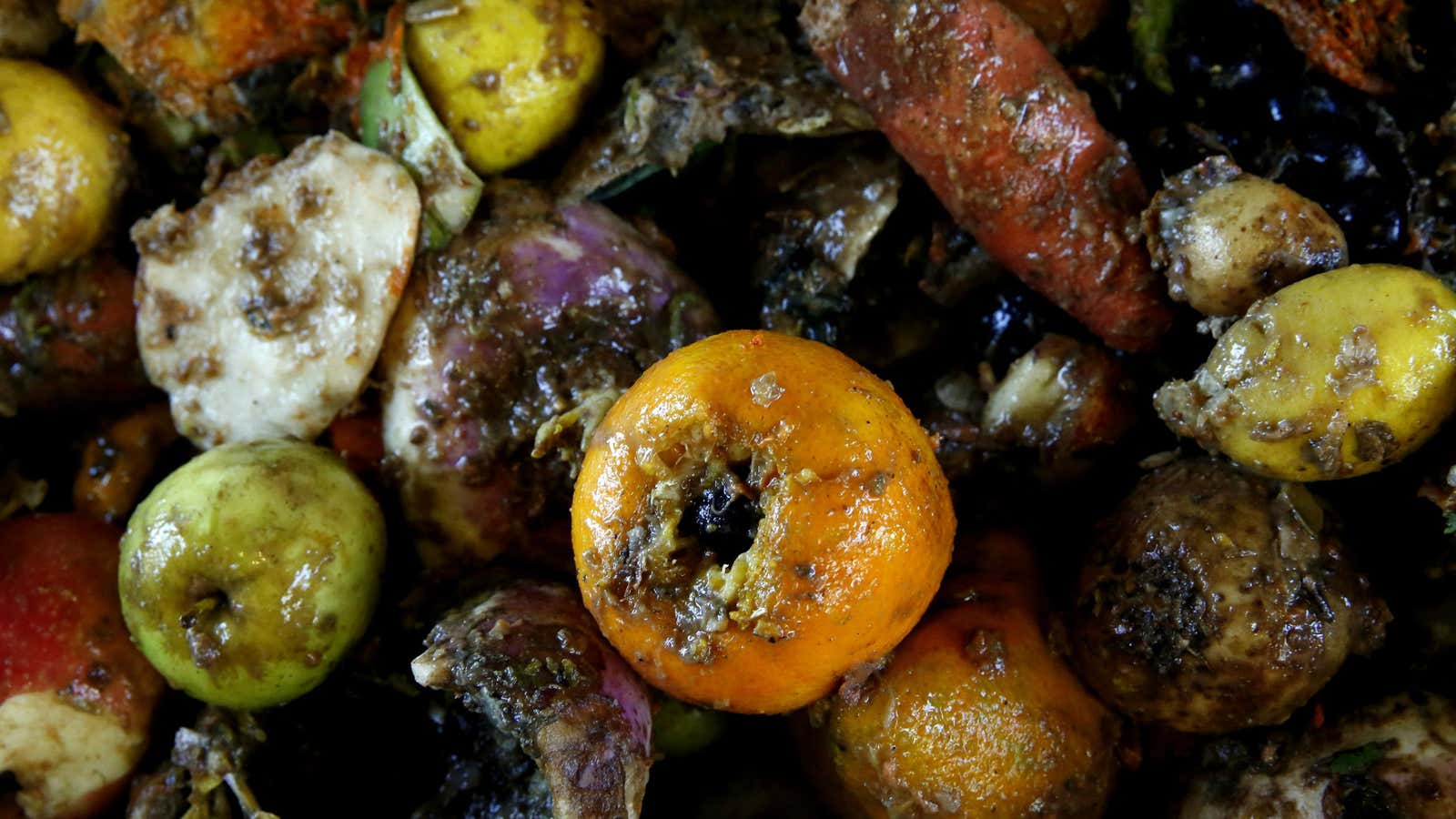Amy Savage recently conducted an experiment in Manhattan. Savage is a postdoctoral scholar at North Carolina State University; she was investigating the roles that non-human animals provide in taking food from urban environments, an ecological task she calls “food removal service.” For the experiment, Savage and her fellow researchers laid out hot dogs, cookies, and potato chips—anthropogenic foods that have nothing to do with any evolutionary history of eating, except yours and mine—to see what would happen.
“In the most urban environments we sampled, the medians on Broadway, arthropods moved just as much food as all the vertebrates combined,” she says. Rats of New York, set that crown on the ground: It was New York’s ants who did the lion’s share of the cleanup.
“You think of them as being so small. How could they be that important?” Savage says. “Individual ants might be small, but the biomass of a colony is quite large. They’re quite efficient at removing food.”
So it came as a surprise to Savage when she discovered recently that New York’s American Museum of Natural History—which boasts a world-class Hymenoptera collection in its Division of Invertebrate Zoology—did not include a single specimen of ant native to New York City. While that might seem like a minor oversight, the National Zoo in Washington, D.C., recently shuttered its Invertebrate House altogether, underscoring the fact that the study of urban insects isn’t a priority. That’s a problem for everyone.
A recent article in Science found that most known invertebrate populations have seen a 45 percent decline over the last 40 years. That’s a particular problem for cities, where we don’t know nearly enough about the invertebrates that live alongside us. What we do know about their roles tell us that arthropods are critical for all kinds of things that we take for granted. Without urban insects, our lives might be transformed in ways large and small. City bugs nevertheless remain critically understudied.
Savage has devoted her life to myrmecophily, which is an extraordinary word for the interaction between animals and ants, typically denoting positive associations. Her work in entomology focuses on the community-wide consequences of mutualisms, or inter-species interactions and adaptations—like the relationship between ants and aphids, for example. Savage’s work in the more tailored field of urban entomology leads her to believe that invertebrates, and especially insects, play an underexamined role in the human ecosystem.
“We have this idea that all arthropods are pests,” Savage says. “It turns out that very few of them are. It turns out one of the services they provide is predation on the pest species.”
Most everyone knows about bees, of course. Their role in pollination is something children learn in grade school. Scientists are coming to grips with the alarming consequences of honeybee collapse, even if the cause of this crisis is proving difficult to diagnose.
Arthropods provide other essential services as well. Saprophytes such as flies (in their larval stage) are instrumental in breaking down organic matter. In addition to working as unpaid garbage collectors, insects are critical to soil aeration. Earthworms and fungi get most of the credit for this work, but arthropods break down soil matter into sizes that other organisms can work with.
Savage worries over the things we don’t know about insects as urban service providers. And we know even less about how cities work with insects. She says that her preliminary research has shown that structural complexity in the environment boosts the diversity of ant populations, for example—even just a cement block.
“People want areas to look clean and neat, but we might be losing services by taking out rotting logs, where insects are able to live,” Savage says.
Cities are doing much worse than robbing insects of their happy log lofts. Scientists have ample evidence to suggest that a mass extinction event, the sixth in the history of life on Earth, is now underway—and the blame “falls firmly on the shoulders of humans,” says National Geographic. The rapid die-off of insects alone is bound to have big consequences for the U.S. economy: A 2006 study by Cornell entomologist John Losey and Xerces Society for Invertebrate Conservation director Mace Vaughan pegs the value of ecological services provided by wild insects at $57 billion annually, easy.
Our research priorities don’t reflect the numbers. While the National Zoo’s Invertebrate House was more of an exhibit than a research institution, it served to introduce the general public to invertebrates—which, after all, do make up 99 percent of the species on the planet. The nation promptly panicked when the Zoo shut down its panda cam during the government shutdown, but the closure of the Invertebrate House hasn’t yielded as much unrest. Yet a panda has never cleaned up a banana peel off the street, or done much of anything else.
Entomophobia comes with a cost for cities, though we don’t know yet what it is. “We haven’t studied cities like we should, given how many people live in cities,” Savage says. “We need more experiments to be conducted in cities, so we can get a sense of what these arthropods contribute to ecosystem services.”
This post originally appeared at CityLab. More from our sister site:
Mexico City’s ‘Innovation Lab’ Tries Tech Solutions for Urban Issues
Craft Beer Drinkers: Be Wary of ‘Exploding Swill’
